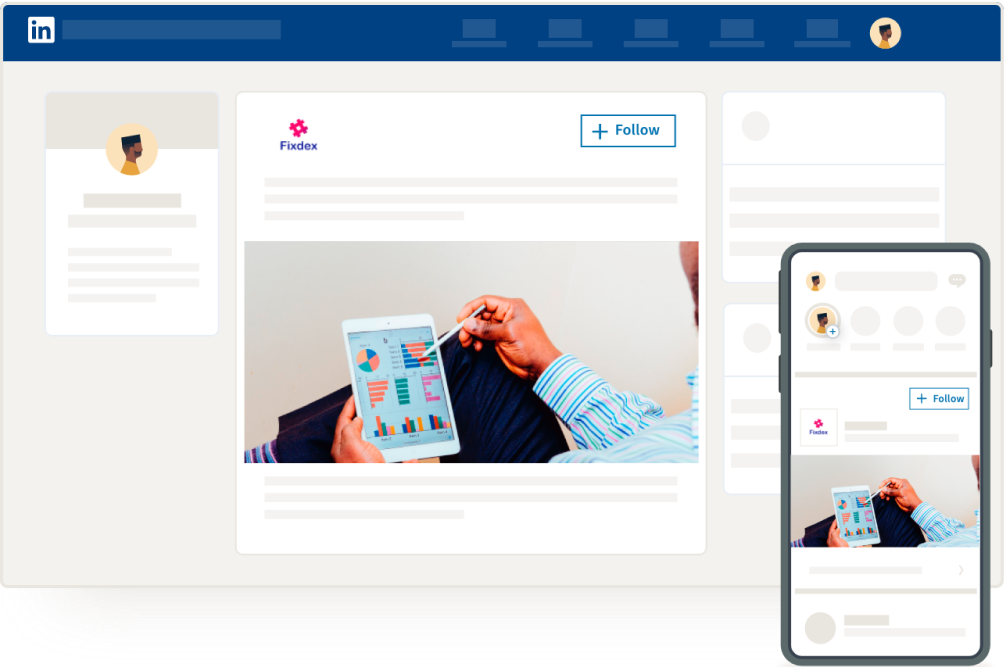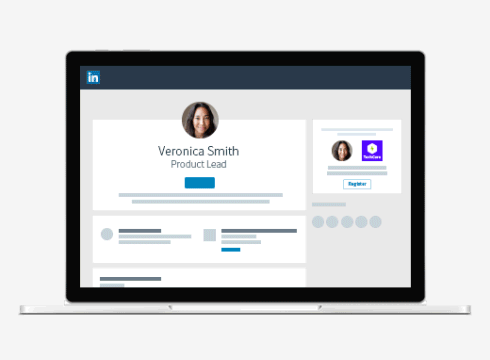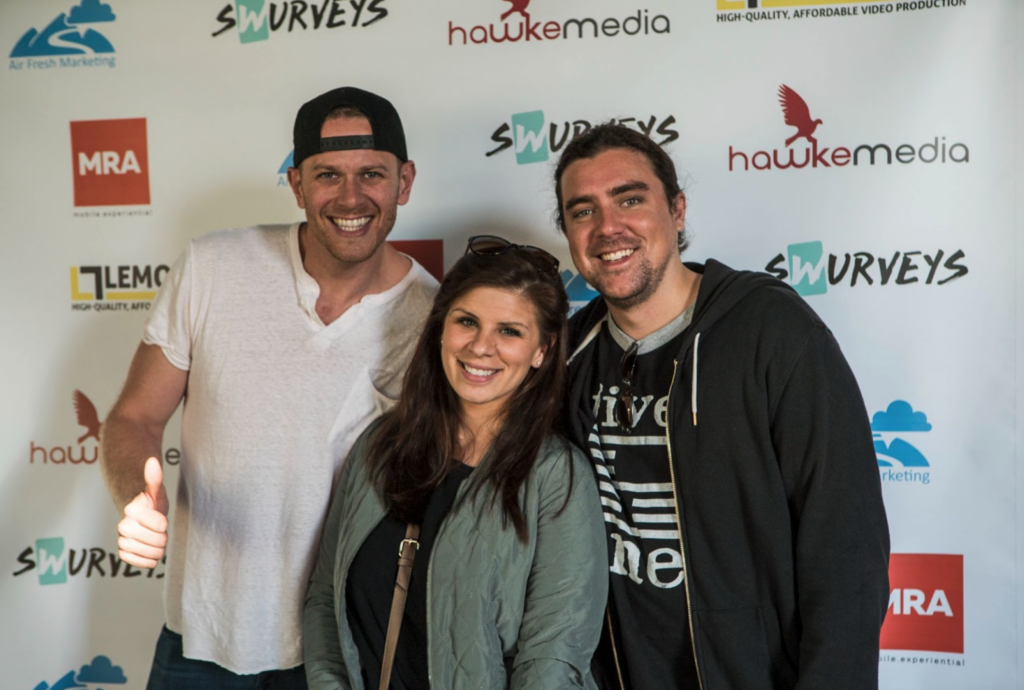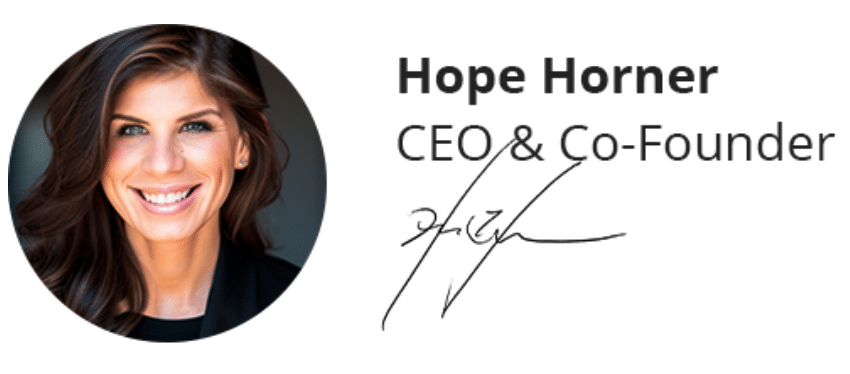From Broadcast to Today
When the first TV commercial launched in 1941, advertising was changed forever. For the decades that followed, Broadcast was the only distribution platform option for video spots.
The concept involved only one format, one aspect ratio, a few length options, and limited targeting. 64 years later, YouTube’s launch in 2005 was arguably the beginning of the video revolution, and we’ve seen video capabilities explode ever since.
Today, there are so many places to distribute video ads that it’s hard to even keep up. Video placements exist across social platforms like Instagram or TikTok, video-first platforms like YouTube, OTT platforms like Netflix or Hulu, e-commerce sites like Amazon, and, of course, traditional options like Broadcast.
The depth of career expertise that we used to find with Broadcast commercial production is much more difficult in today’s ever-evolving landscape. More importantly, the approach that used to work for Broadcast is slowly becoming obsolete.


The Future of Video
What does this mean for you? One-size-fits-all video doesn’t cut it if you truly want results. We often see marketers creating a video first, then figuring out how to resize it or alter it for various distribution platforms. We’d argue that approach is backwards, and it’s more critical than ever to start with your goals and decide on your platform before you think about your creative approach.
If you haven’t been getting results from your video marketing strategy in recent years, this phenomenon may be to blame. While the ad landscape has gotten more complex, audiences have also raised their standards for what “good video” looks like. We’re entering a new phase of video marketing, and the winners in the coming years will be the marketers that lean into platform-specific content and tailor their creative approach accordingly.
With that background in mind, let’s take a closer look at the top platforms for video ad distribution and how you should approach each one to get results. First up: YouTube.
YouTube
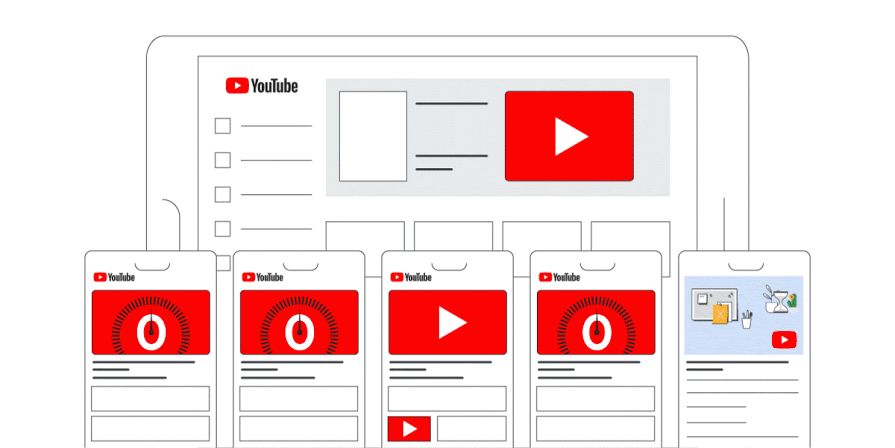
The Ad Landscape
YouTube offers several video placements, including skippable in-stream ads, non-skippable in-stream ads, in-feed video ads, bumper ads, outstream ads, and masthead ads. There are two options in terms of your bidding structure. The first is CPV (cost per view), which means that you pay once a viewer has watched 30 seconds of your video or interacted with the video in some way. The second is based on impressions, which is the more “standard” approach for the larger ad landscape.
One thing to note about the YouTube environment is that the CPV bidding structure lends itself to awareness-based campaigns. With ad placements paid per view, you get free awareness from everyone who doesn’tmake it to the 30-second mark—the arbitrary threshold for what constitutes a “view.” If you’re focused on getting your brand in front of as many users as possible, you can use the CPV option to your advantage.
The Audience
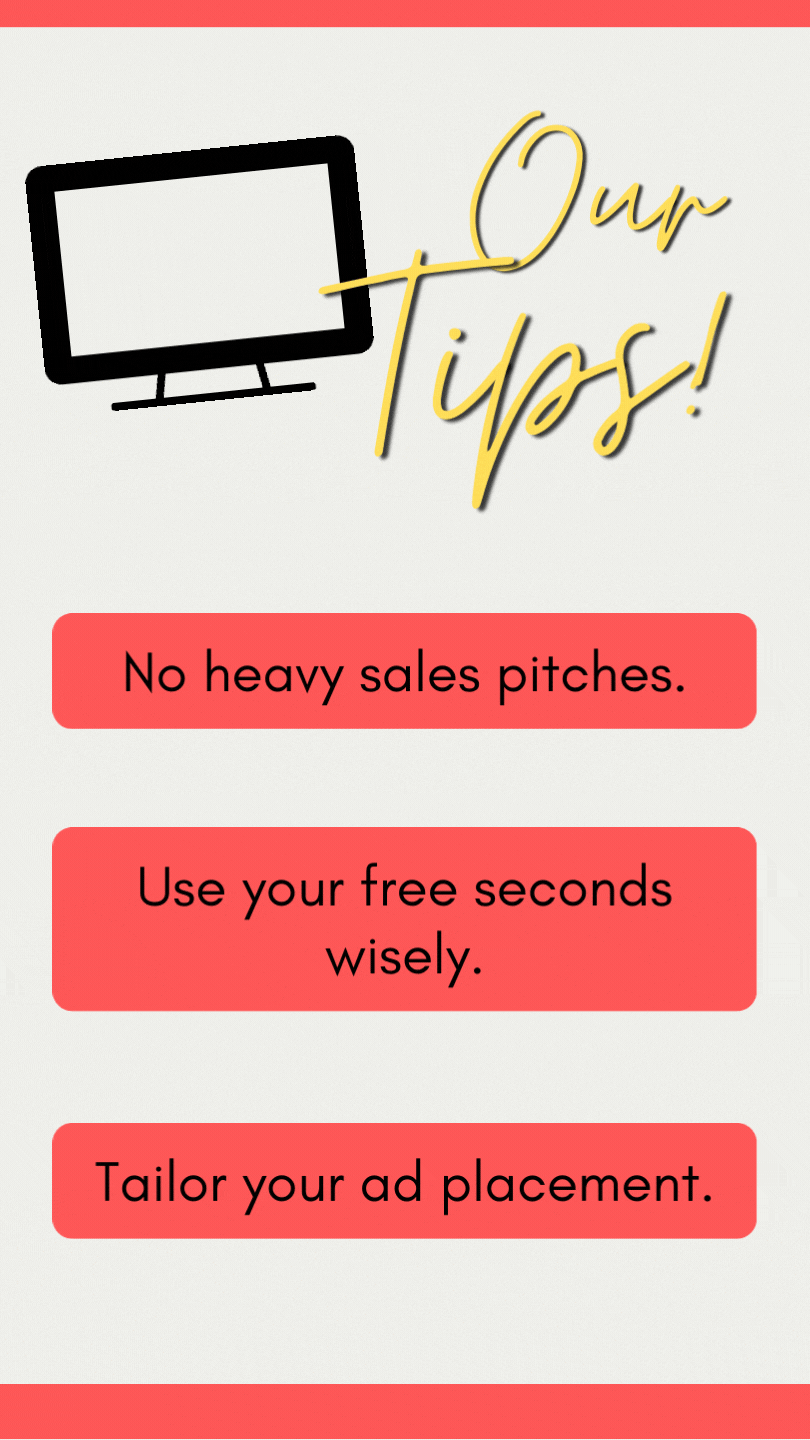
YouTube is the leading video platform for all age groups, with the heaviest present of 65+ users compared to other platforms. It’s a great option for ads that need to reach as broad an audience as possible.
Notably, YouTube’s users are already on the platform to consume video content. For video marketers, that means that ad placements will feel like less of an interruption than they might on other platforms. Audiences are already primed to watch, so your video is just a brief delay from the actual content rather than a complete disruption.
Creative Recommendations
For YouTube, it’s especially important to have a strong hook and front-load your value. Why? As we discussed earlier, if you use the CPV bidding structure, you have the opportunity to get information to your audience in the early seconds without directly paying for it. Make the most of those precious free seconds by making your intro as memorable and value-packed as possible.
In general, YouTube is a great place for edu-tainment (educational and entertaining) content, so stay away from heavy sales pitches. YouTube is not the place for your “standard” marketing content, as audiences want to feel like they’re coming away from the experience with their own value. If you feel the need to push a sale with your content, YouTube may not be the right fit.
Lastly, make sure to tailor your YouTube ad placement to your goals. For example, non-skippable in-stream ads work well for brand awareness because users have no choice but to watch the content. Other placements align more closely with goals like driving purchase intent, so be specific about matching your goal with your ad placement.
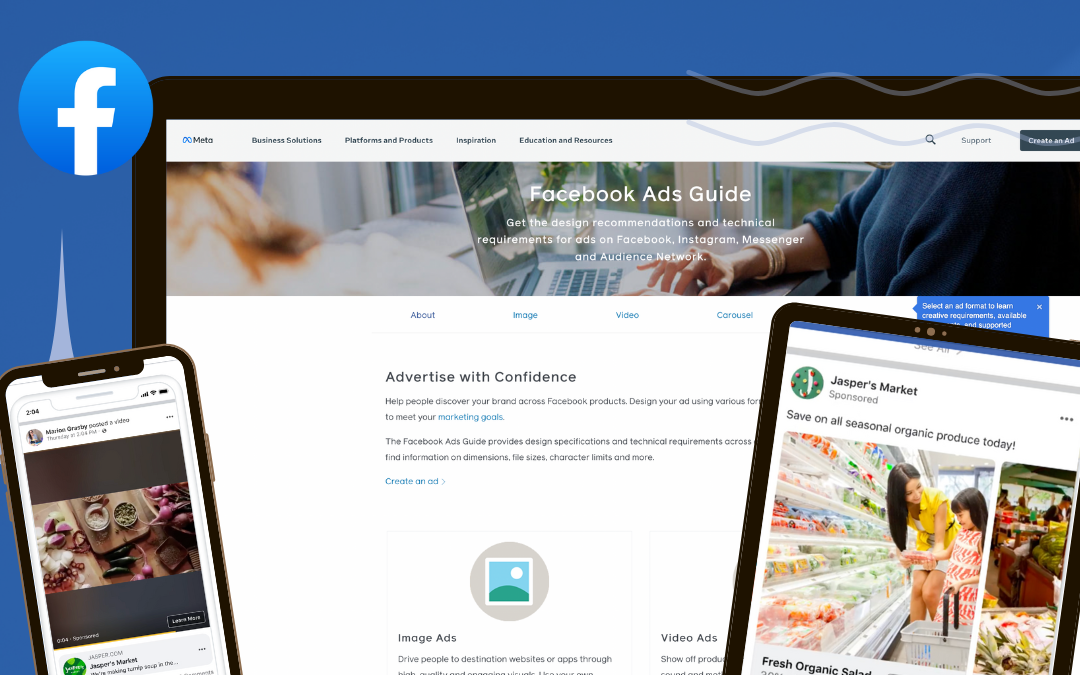
The Ad Landscape
Facebook video ads options include placements within Facebook Feed, Facebook Instant Articles, Facebook In-Stream Video, Facebook Marketplace, and Facebook Stories. For the bidding structure, you’re able to choose CPM (cost per thousand impressions) or CPC (cost per click) depending on which works best for your goals.
The Audience
Facebook’s largest user group is millennials, but the platform continues to reach people across all user bases worldwide. While on the platform, most people are focusing on some combination of entertainment and catching up with friends and family.
For video marketers, this means that Facebook users will be drawn in by attention-grabbing content that feels “shareable.” However, they may not be expecting to watch video content as they scroll, so there’s a bit more of an “interruption” factor than you might experience on a video-first platform like YouTube or TikTok.
Creative Recommendations
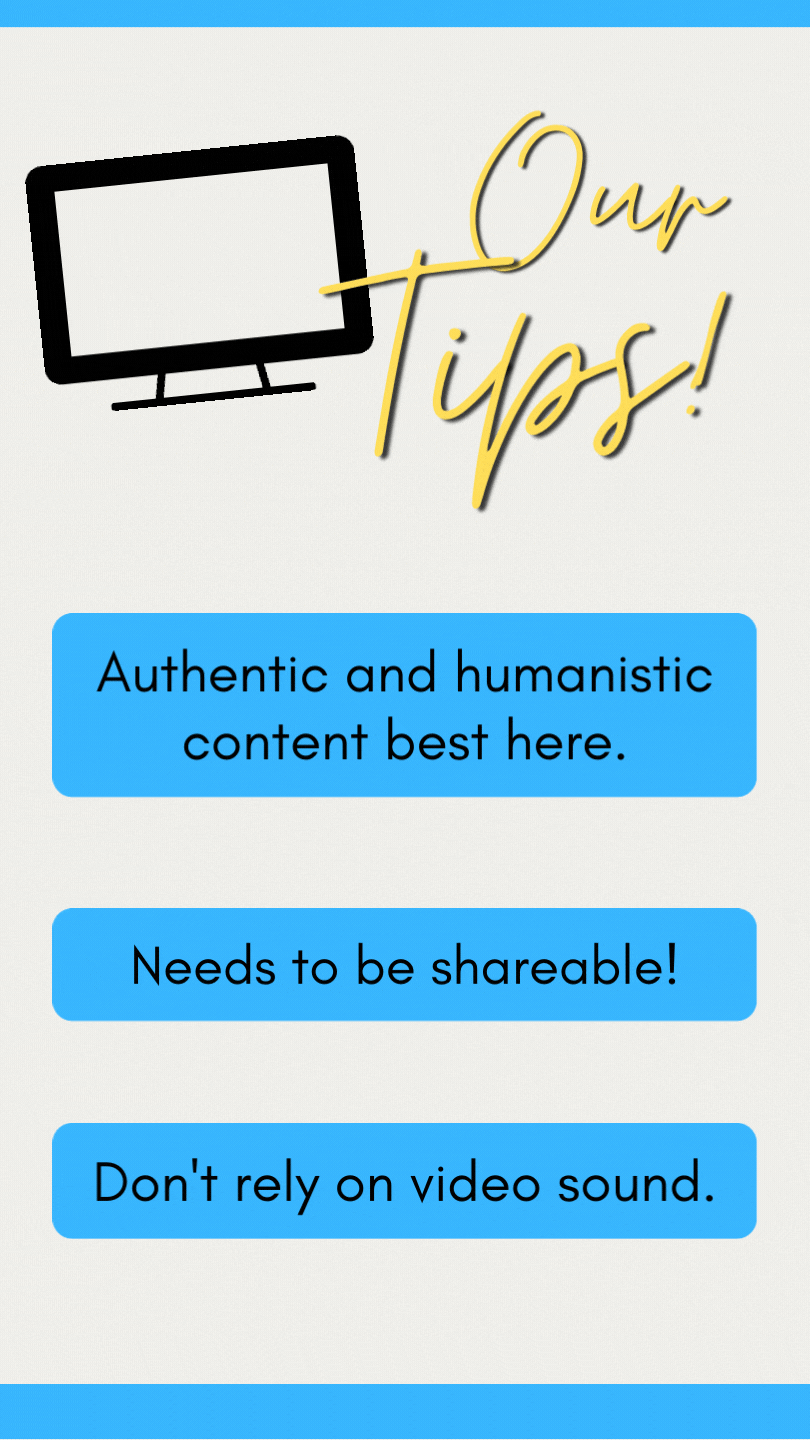
Video ads on Facebook should focus on being catchy, funny, human, personal, and/or social. On Facebook in particular, it can help to call out your avatar (your video’s target audience) right away to grab attention as users scroll. Then, share their pain point and tease or reveal your solution.
Facebook tends to work better to advertise B2C products over B2B products, and it also tends to work better for items at lower price points. If your product or service requires lots of research or immersion before the prospect is ready to buy, Facebook may not be your best-suited platform.
One helpful tool to gut-check your content for Facebook is to think about whether the content is shareable. Ask yourself one simple question: If you were a member of your brand’s target audience, would you feel inclined to share the video with family or friends? Or, if you’re not a sharer in general, would you watch the video if you scrolled past it? If the answer is no, rethink your content to make it more engaging before you post.
Lastly, don’t rely on your video’s audio content for Facebook. The default for Facebook content is muted audio, and users have to manually enable the audio if they want to hear video sound. Expect most of your audience to stick with the default setting and follow along using captions and visual cues instead.
The Ad Landscape
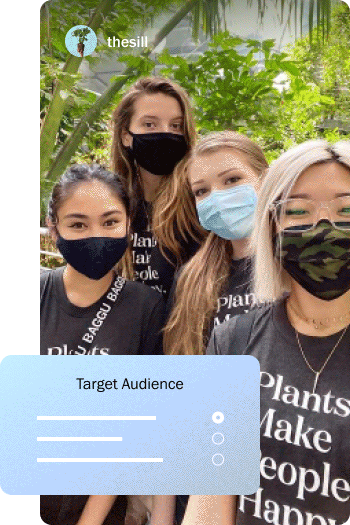
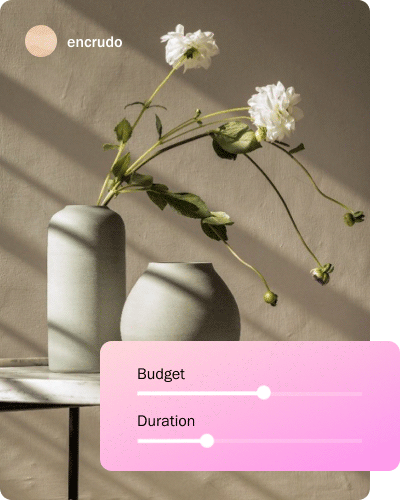
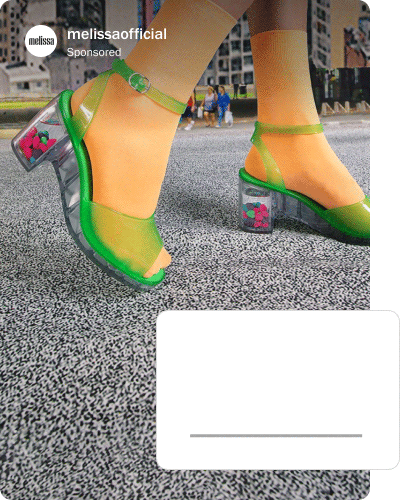
Instagram’s video-enabled placements include Instagram Stories, Instagram Feed, Instagram Explore, and Instagram Reels. Like Facebook (which operates from the same ad platform), you’re able to choose CPM (cost per thousand impressions) or CPC (cost per click) depending on which works best for your goals.
The Audience
Facebook and Instagram may share a parent company, but their audiences are slightly different. Compared to Facebook, Instagram skews towards a younger demographic and a more US-centric audience. Still, Instagram boasts many users in all age groups across the world.
Instagram’s focus is more heavily centered on entertainment and photo sharing, so it’s important for ad content on Instagram to be highly visual. Your ad creative will be competing with native posts that are highly curated and polished, so it’ll need to rival the visuals to keep up.
Creative Recommendations
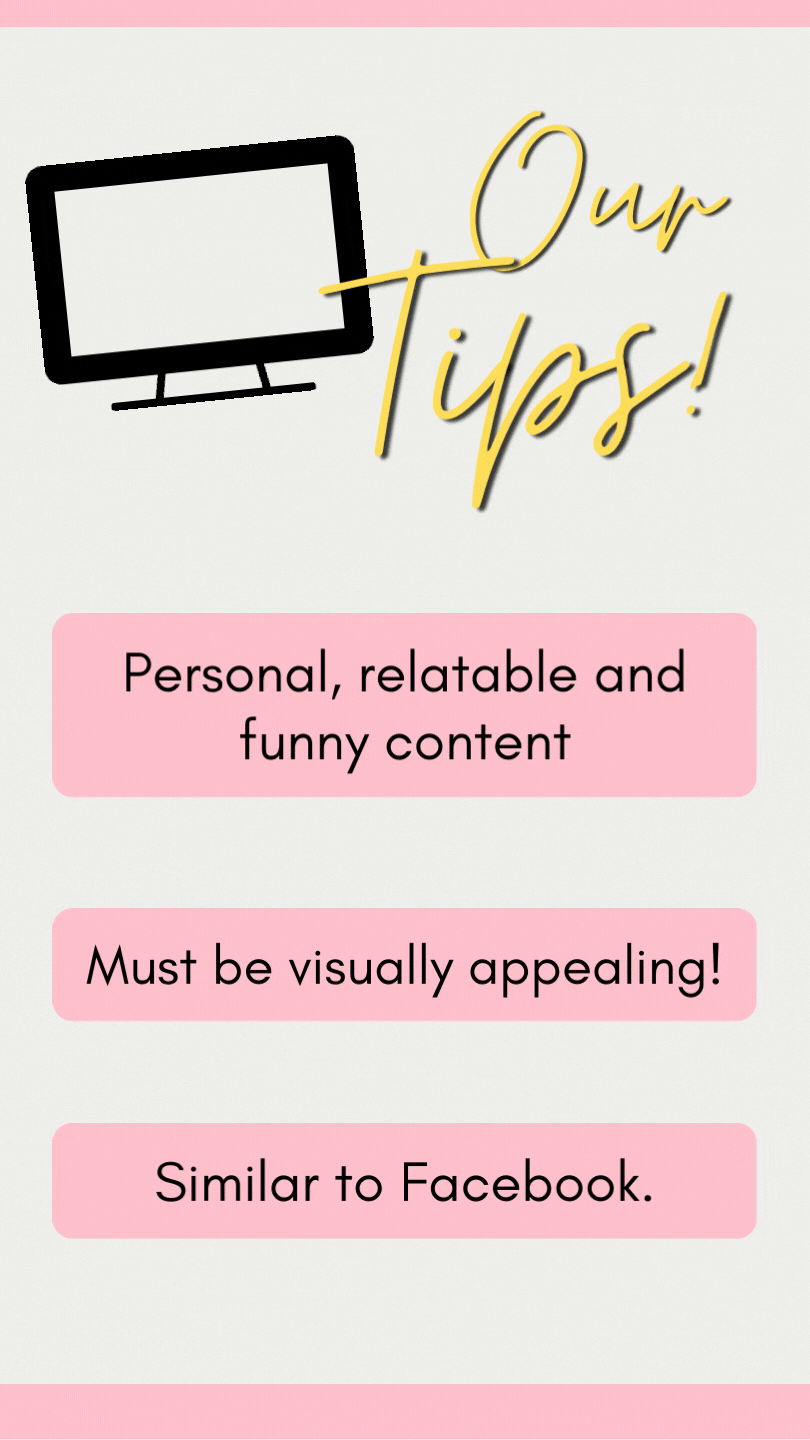
Our recommendation for Instagram? Focus on content that is catchy, funny, human, and/or personal—like Facebook. However, you can also lean into content that focused a bit more on vanity and social value.
All content for Instagram should feature amazing visuals, whether that means bright colors, fast-paced transitions, or engaging graphics. Bland, information-first content just won’t cut it on this platform.
Like Facebook, Instagram tends to work better to promote B2C products and skews towards lower price points. Also like Facebook, make sure you’re not relying on your video’s audio to carry the key messaging. Again, the default is muted content, so many users will be engaging with only the visuals and captions.
One final note here: you’ll notice that Facebook and Instagram are similar in the way that video ads work, which makes sense given that they both fall under the Meta umbrella. The ad landscape itself is even exactly the same, and distributing on one platform versus the other just means clicking a different box during the setup process.
What does this mean for you? If you’re used to mass-distributing your content and you’re new to the idea of tailoring your video to the specific distribution channel, the most effective way to repurpose identical content is typically by doubling up on Facebook and Instagram. Many of the other platforms are unique enough that you’ll lose out on engagement and effectiveness, but you’ll see less of those losses between Facebook and Instagram.
TikTok
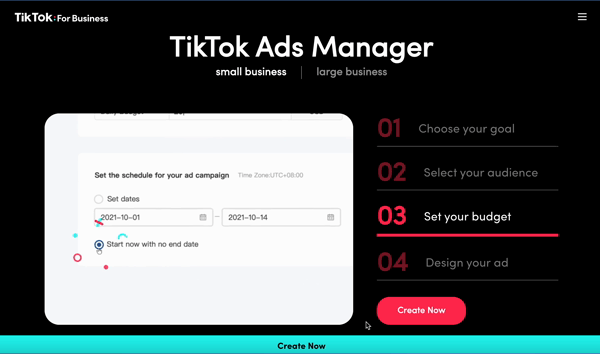
The Ad Landscape
TikTok is still the underdog of the video ad space, but it’s catching up quickly in terms of users and ad performance. TikTok’s only direct ad placement is In-Feed Ads, but brands can also utilize affiliate ads to partner with popular content creators. Those content creators will then make content for your brand and distribute it on their own channel, which you can then boost as an in-feed ad for wider reach.
The bidding structure offers several options based on your goals. You can opt for CPM and CPC as we’ve seen on the other platforms, but you can also choose CPV (cost per one thousand six-second or two-second views) or oCPM (“optimized” cost per thousand impressions, which targets users that are likely to convert). Notably, oCPM is the current default bidding method on TikTok.
The Audience
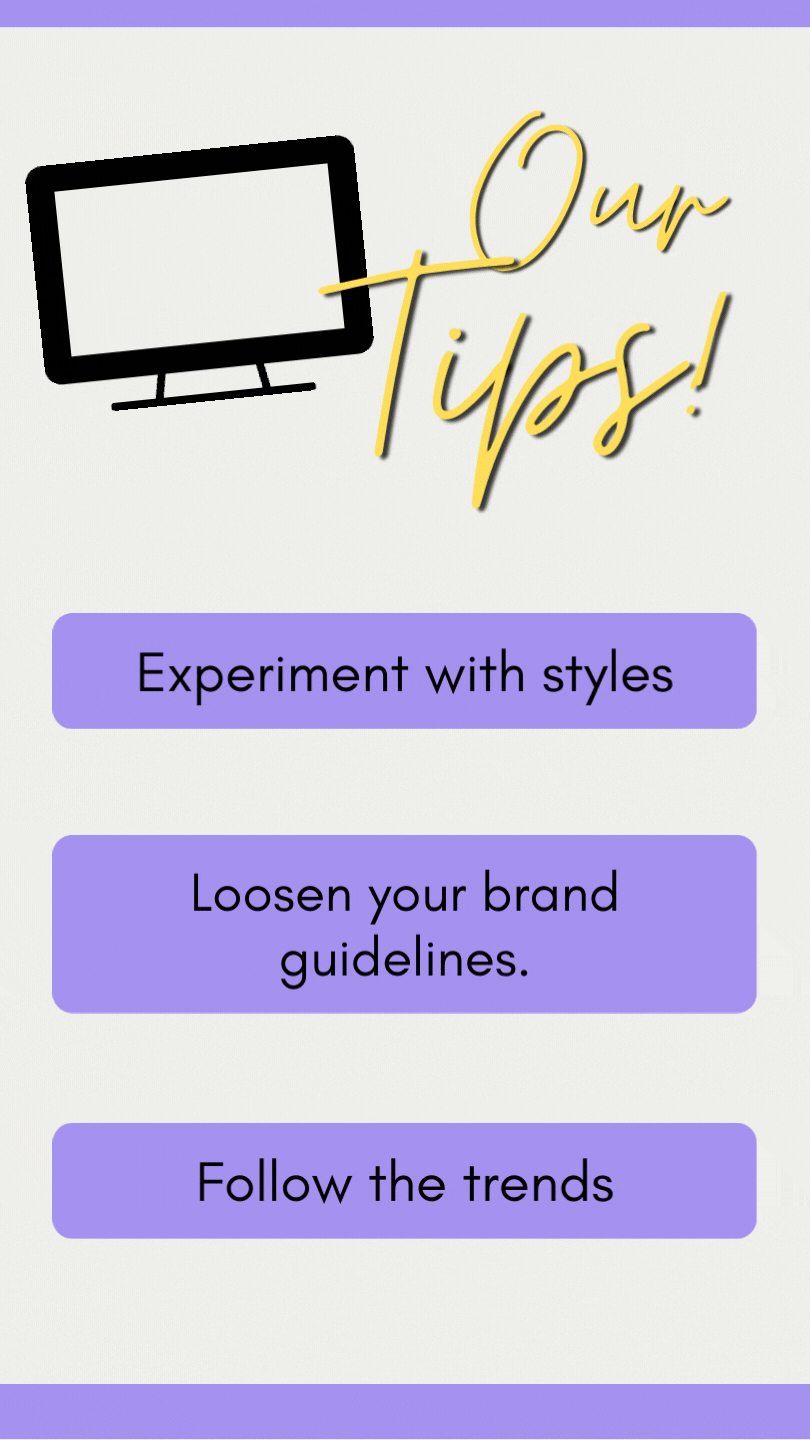
TikTok’s audience skews younger, with a heavy presence among Gen Z users and a steep drop-off of users over the age of 50 worldwide. Think of TikTok as a mix between an edu-tainment focus (like YouTube) and a focus on connecting with others.
Note that TikTok is distinctly not a family and friends platform. Many people use TikTok as a place to connect and relate to complete strangers—worldwide—in ways that they would never share or open up to people they actually know. This means authenticity is absolutely essential on TikTok. The app’s user base doesn’t want ultra-polished brand content. TikTok is where users go to be “real” about who they are and what they want, and brands need to respect that by also letting their guards down.
Creative Recommendations
TikTok is a great place to experiment with your video ad content. If you have strict brand guidelines that apply to all your other social platforms, TikTok may be the place to loosen the reins a little bit. Case in point: Duolingo is the most-talked-about brand on the platform, and it publishes content that is often downright aggressive. You never know unless you try, so experiment with a variety of video styles and see what resonates most with your audience.
Lastly, on TikTok, don’t be afraid to lean into trends—but work quickly. Trend-centric content is not the time to try to polish every last detail on your video and send the content through ten layers of internal review. An 80% polished video that’s published in time to be relevant for the trend is better than a 100% polished video published weeks or months later.
The Ad Landscape
Last but not least, LinkedIn offers Sponsored Content placements that show up in users’ feeds. The bidding structure follows a CPC or CPM model depending on your goals.
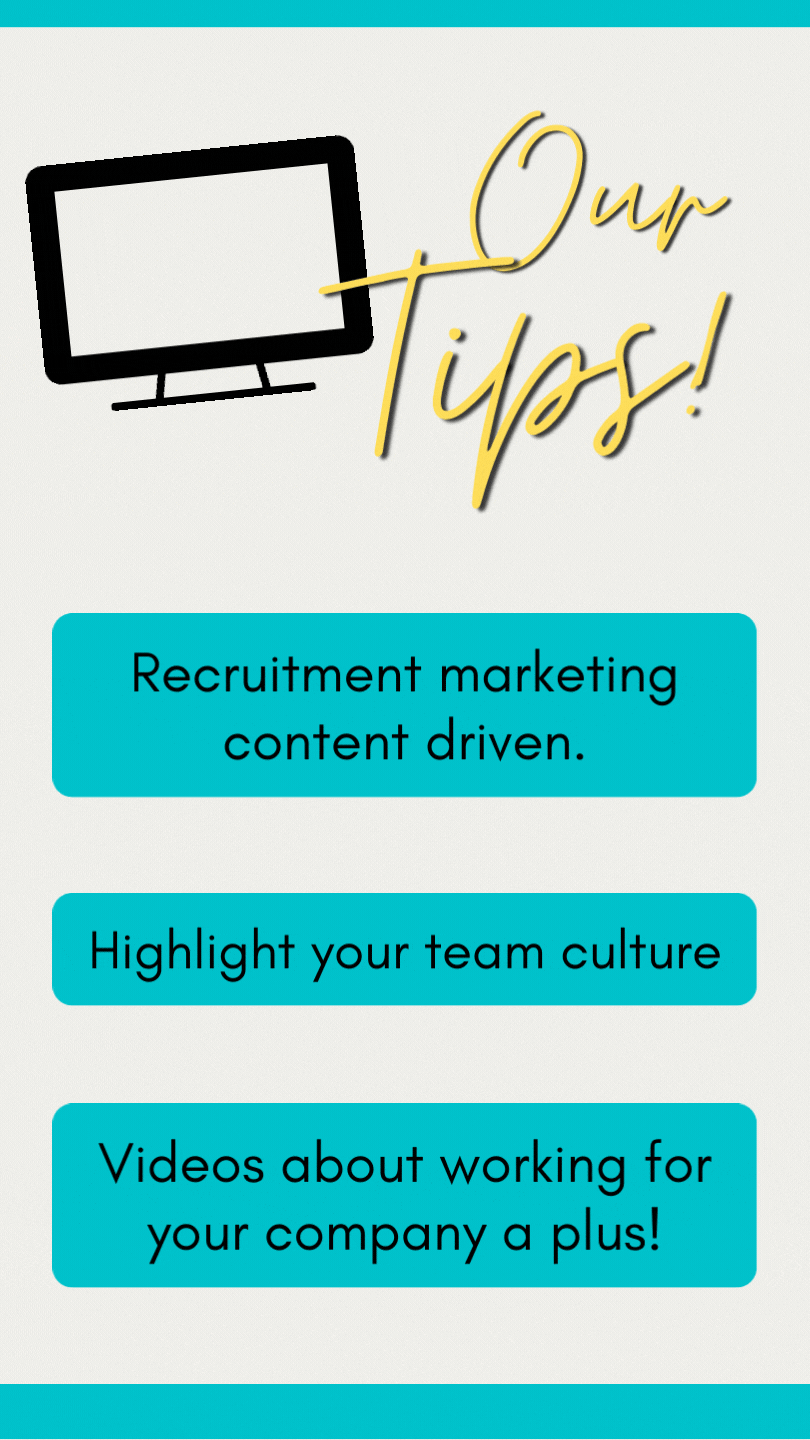
The Audience
LinkedIn’s audience is professional-age users with a heavy presence of 25- to 34-year-olds. It skews towards higher income levels and the focus for most users is career and industry-specific education and networking.
Creative Recommendations
LinkedIn is a great place to share recruitment marketing content, highlighting your team culture or sharing videos about what it’s like to apply or work within your organization. Otherwise, we’d recommend using your ad budget elsewhere.
When it comes to selling, users on LinkedIn are in “career mode” rather than “shopping mode,” and even a light sales message will come across as aggressive. Combine that with the limited targeting landscape and the expensive placements, and you’ll get better bang for your buck on the other four platforms.
Final Thoughts
As you embark on your next video production journey, we hope this breakdown has inspired you to begin by thinking about your goals and the platform that’s likely to deliver the best results. Then, use the information above to inform and guide your creative strategy. This “start at the end” strategy is much more likely to give you the outcome you’re hoping for. Best of luck!

